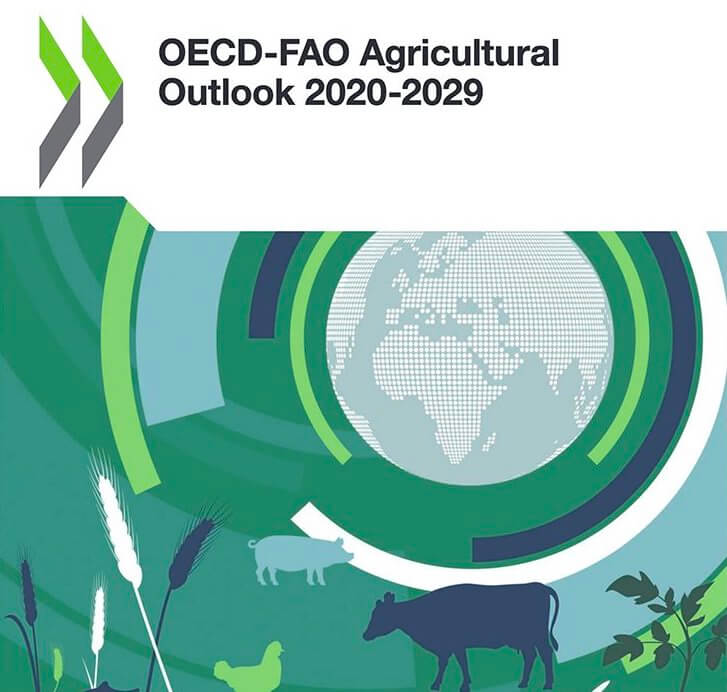A joint report from the OECD and the FAO of the United Nations concluded the pandemic has brought about “unprecedented uncertainties in global food supply chains, with potential bottlenecks in labour markets, input industries, agriculture production, food processing, transport and logistics, as well as shifts in demand for food and food services.” | Screencap via FAO.org
Two international organizations expect COVID-19 to depress agriculture demand for years and weaken food security around the world.
A joint report from Organisation for Economic Co-operation and Development (OECD) and the Food and Agriculture Organization of the United Nations (FAO) concluded the pandemic has brought about “unprecedented uncertainties in global food supply chains, with potential bottlenecks in labour markets, input industries, agriculture production, food processing, transport and logistics, as well as shifts in demand for food and food services.”
It argues that governments will be challenged to find policies to address those issues, and says during the next 10 years the growth of supply in agriculture will outpace demand growth, “causing real prices of most commodities to remain at or below their current levels.”
But a decrease in disposable incomes in poorer countries and households because of COVID-19 is first expected to lower demand over the next few years.
“Due to the ongoing transition in global diets towards higher consumption of animal products, fats and other foods, the share of staples in the food basket is projected to decline by 2029 for all income groups,” the report states.
“In particular, consumers in middle-income countries are expected to use their additional income to shift their diets away from staples towards higher value products. Meanwhile, environmental and health concerns in high-income countries are expected to support a transition from animal-based protein towards alternative sources of protein.”
Researchers from the two organizations says about 85 percent of crop output growth between now and 2029 will come from yield improvements spurred from higher input use, production technology investments and better cultivation practices.
“Multiple harvests per year will account for another 10 percent of crop output growth, leaving only five percent to cropland expansion,” it says.
Beyond the COVID-19 crisis, other challenges are also expected. That list includes the locus invasion in East Africa and Asia, the spread of African swine fever, an increased frequency of climatic events and trade tensions between major trading powers.
The report also predicts the global food system will need to adapt to evolving diets and consumer advantages, while taking advantage of digital innovation.
Researchers also looked at the future of global agricultural greenhouse gas emissions. Assuming current policies and technologies remain, the two organizations predict emissions to grow by 0.5 percent each year until 2029, which would be a reduction in agriculture’s carbon intensity. Livestock production accounts for 80 percent of the expected increases, and researchers note that the agriculture sector is still on pace to fall short of targets set under the Paris Agreement.
FAO has also launched its joint action on COVID-19. It focuses on seven priority areas: a global humanitarian response plan, data for decision making, economic inclusion and social protection to reduce poverty, trade and food safety standards, boosting resiliency for recovery, preventing the next zoonotic pandemic and food systems transformation.
The FAO has also identified 27 countries heading for a COVID-19 driven food crisis. Many on the list were dealing with a hunger crisis before COVID-19.
Full article: https://www.producer.com/2020/07/covid-19-will-impact-global-food-systems-for-years-to-come-fao-oced/
